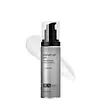What's inside
What's inside
 Key Ingredients
Key Ingredients

 Benefits
Benefits

 Concerns
Concerns

 Ingredients Side-by-side
Ingredients Side-by-side

Water
Skin ConditioningAlcohol
AntimicrobialHamamelis Virginiana Water
AstringentButylene Glycol
HumectantNiacinamide
SmoothingLactic Acid
BufferingGluconolactone
Skin ConditioningSodium Polyacryloyldimethyl Taurate
Emulsion StabilisingTranexamic Acid
AstringentBisabolol
MaskingHexylresorcinol
AntimicrobialHydrolyzed Hyaluronic Acid
HumectantPropyl Gallate
AntioxidantPentylene Glycol
Skin Conditioning4-Butylresorcinol
AntioxidantGlabridin
BleachingGlycyrrhiza Glabra Root Extract
BleachingRosa Damascena Flower Oil
MaskingRosa Damascena Flower Water
MaskingWater, Alcohol, Hamamelis Virginiana Water, Butylene Glycol, Niacinamide, Lactic Acid, Gluconolactone, Sodium Polyacryloyldimethyl Taurate, Tranexamic Acid, Bisabolol, Hexylresorcinol, Hydrolyzed Hyaluronic Acid, Propyl Gallate, Pentylene Glycol, 4-Butylresorcinol, Glabridin, Glycyrrhiza Glabra Root Extract, Rosa Damascena Flower Oil, Rosa Damascena Flower Water
Water
Skin ConditioningDimethyl Isosorbide
SolventGlycerin
HumectantOlive Oil Glycereth-8 Esters
EmollientNiacinamide
SmoothingHydroxyethyl Acrylate/Sodium Acryloyldimethyl Taurate Copolymer
Emulsion StabilisingCoconut Alkanes
EmollientMalassezin
Rhododendron Ferrugineum Extract
MaskingSodium Hyaluronate
HumectantBisabolol
MaskingCarnosine
Skin ConditioningTocopherol
AntioxidantTetrasodium Glutamate Diacetate
Silica
AbrasiveCoco-Caprylate/Caprate
EmollientChlorphenesin
AntimicrobialSodium Phytate
Pentylene Glycol
Skin ConditioningCaprylyl Glycol
EmollientCitric Acid
BufferingSodium Hydroxide
BufferingDisodium Phosphate
BufferingSodium Chloride
MaskingPhenoxyethanol
PreservativeWater, Dimethyl Isosorbide, Glycerin, Olive Oil Glycereth-8 Esters, Niacinamide, Hydroxyethyl Acrylate/Sodium Acryloyldimethyl Taurate Copolymer, Coconut Alkanes, Malassezin, Rhododendron Ferrugineum Extract, Sodium Hyaluronate, Bisabolol, Carnosine, Tocopherol, Tetrasodium Glutamate Diacetate, Silica, Coco-Caprylate/Caprate, Chlorphenesin, Sodium Phytate, Pentylene Glycol, Caprylyl Glycol, Citric Acid, Sodium Hydroxide, Disodium Phosphate, Sodium Chloride, Phenoxyethanol
Ingredients Explained
These ingredients are found in both products.
Ingredients higher up in an ingredient list are typically present in a larger amount.
Bisabolol is famous for its skin soothing properties. It does this by blocking inflammatory signals, helping to reduce your body's reaction to irritation.
This ingredient also interferes with the process of hyperpigmentation. This can help with reducing dark spots and uneven tone.
Bisabolol is an antioxidant. Antioxidants help fight free-radicals. Free-radicals are molecules that may damage your skin cells. By fighting these free-radicals, Bisabolol may slow down signs of aging.
Studies have shown Bisabolol to have antimicrobial properties and may be a fungicide. These properties help preserve a product's shelf life.
All these properties makes bisabolol a great skin barrier helper ingredient.
Bisabolol also helps the absorption of other ingredients.
Note: Synthetic Bisabolol has been shown to be less effective.
Learn more about BisabololNiacinamide is a multitasking form of vitamin B3 that strengthens the skin barrier, reduces pores and dark spots, regulates oil, and improves signs of aging.
And the best part? It's gentle and well-tolerated by most skin types, including sensitive and reactive skin.
You might have heard of "niacin flush", or the reddening of skin that causes itchiness. Niacinamide has not been found to cause this.
In very rare cases, some individuals may not be able to tolerate niacinamide at all or experience an allergic reaction to it.
If you are experiencing flaking, irritation, and dryness with this ingredient, be sure to double check all your products as this ingredient can be found in all categories of skincare.
When incorporating niacinamide into your routine, look out for concentration amounts. Typically, 5% niacinamide provides benefits such as fading dark spots. However, if you have sensitive skin, it is better to begin with a smaller concentration.
When you apply niacinamide to your skin, your body converts it into nicotinamide adenine dinucleotide (NAD). NAD is an essential coenzyme that is already found in your cells as "fuel" and powers countless biological processes.
In your skin, NAD helps repair cell damage, produce new healthy cells, support collagen production, strengthen the skin barrier, and fight environmental stressors (like UV and pollution).
Our natural NAD levels start to decline with age, leading to slower skin repair, visible aging, and a weaker skin barrier. By providing your skin niacinamide, you're recharging your skin's NAD levels. This leads to stronger, healthier, and younger looking skin.
Another name for vitamin B3 is nicotinamide. This vitamin is water-soluble and our bodies don't store it. We obtain Vitamin B3 from either food or skincare. Meat, fish, wheat, yeast, and leafy greens contain vitamin B3.
The type of niacinamide used in skincare is synthetically created.
Learn more about NiacinamidePentylene glycol is typically used within a product to thicken it. It also adds a smooth, soft, and moisturizing feel to the product. It is naturally found in plants such as sugar beets.
The hydrophilic trait of Pentylene Glycol makes it a humectant. As a humectant, Pentylene Glycol helps draw moisture from the air to your skin. This can help keep your skin hydrated.
This property also makes Pentylene Glycol a great texture enhancer. It can also help thicken or stabilize a product.
Pentylene Glycol also acts as a mild preservative and helps to keep a product microbe-free.
Some people may experience mild eye and skin irritation from Pentylene Glycol. We always recommend speaking with a professional about using this ingredient in your routine.
Pentylene Glycol has a low molecular weight and is part of the 1,2-glycol family.
Learn more about Pentylene GlycolWater. It's the most common cosmetic ingredient of all. You'll usually see it at the top of ingredient lists, meaning that it makes up the largest part of the product.
So why is it so popular? Water most often acts as a solvent - this means that it helps dissolve other ingredients into the formulation.
You'll also recognize water as that liquid we all need to stay alive. If you see this, drink a glass of water. Stay hydrated!
Learn more about Water